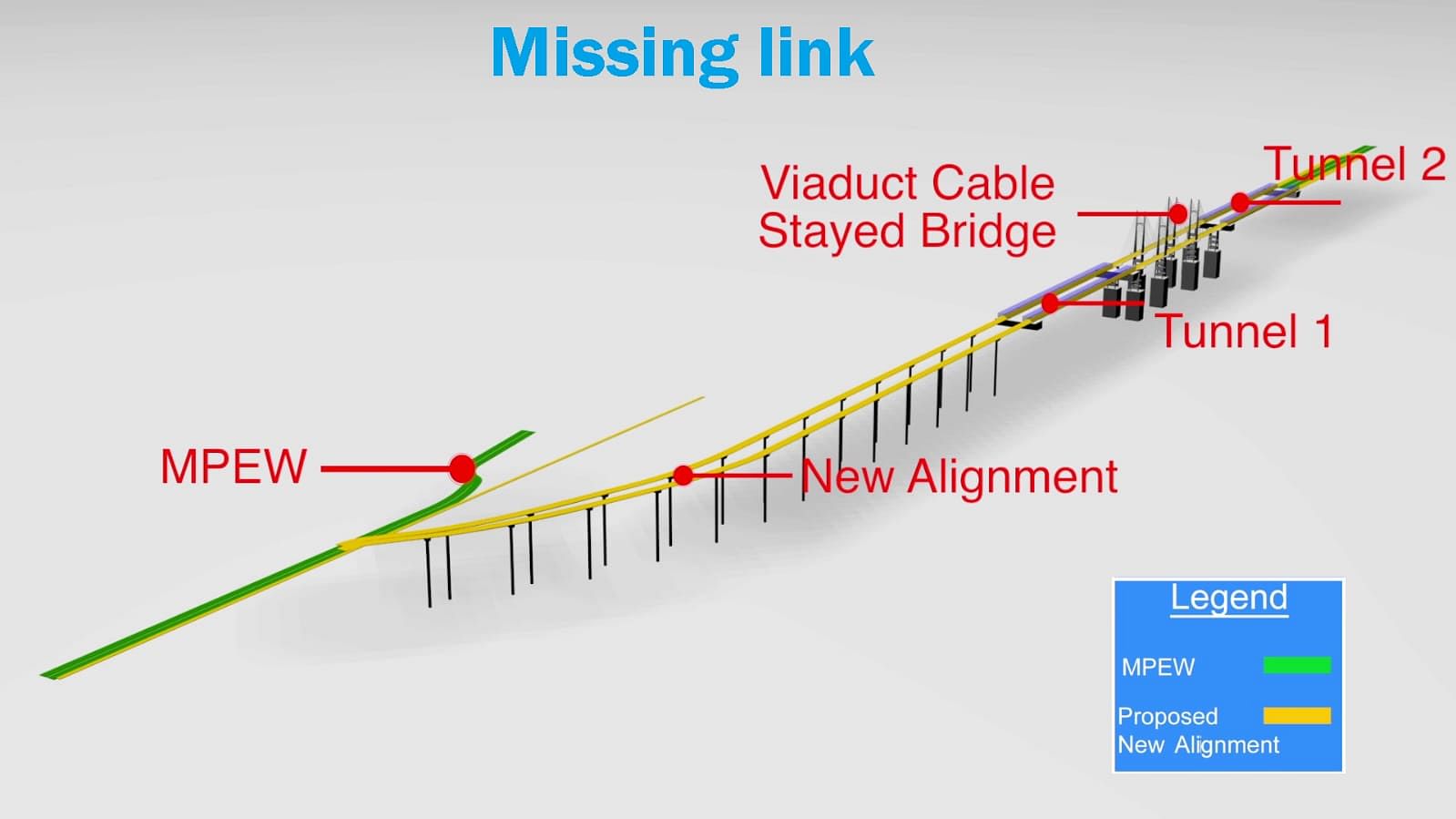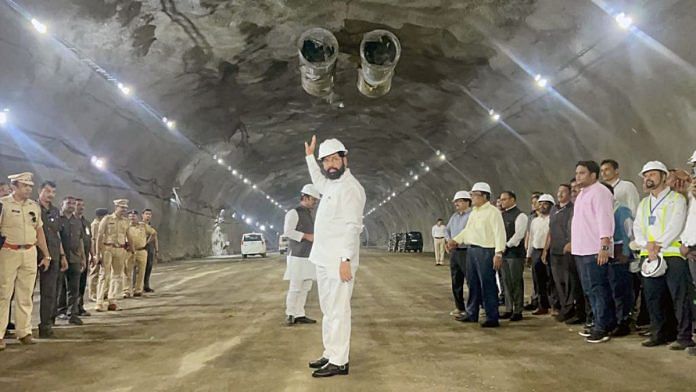Mumbai: The ‘missing link’ on the Mumbai-Pune Expressway, which will ensure seamless connectivity between the two cities, is expected to be operational by August this year, a senior Maharashtra State Road Development Corporation (MSRDC) official said.
MSRDC, the nodal agency for the project, has completed most of the work on the 13-kilometre stretch, which is built on the expressway’s ghat section. Once complete, it will cut travel time between Mumbai and Pune by 30 minutes.
“The project is almost completed and only the work on the cable-stayed bridge remains,” Rajesh Patil, joint managing director (engineering) at MSRDC, told ThePrint. “That will be completed by August. So by August-end 2025, the missing link will start for operations.”
The missing link project was proposed in 2017 to ease traffic congestion and reduce travel time at the Lonavala ghat section, where traffic slows down considerably.
The Mumbai-Pune expressway, the country’s first one, sees an average of 60,000 vehicles per day, with the figure rising to 1,00,000 on weekends and holidays, Patil said.
This surge in traffic volume necessitated the construction of the missing link.
“The travel time will go down by half an hour, primarily because the length will be reduced by 6 kilometres and the road will be almost straight, without any curves. This will save time,” he added. “People will still have the option of using the existing road as it will be functional. However, hazard-carrying vehicles will have to use the ghat road. The rest can use the missing link.”
Currently, it takes over three hours to travel from Mumbai to Pune.
Also Read: From airport to metro, 2025 will see completion of some of Mumbai’s long-pending infra projects
What is the ‘missing link’ project?
Officially known as the Yashwantrao Chavan Expressway (YCEW), the Mumbai-Pune Expressway consists of a six-lane cement concrete pavement with 2.5-metre-wide paved shoulders on both sides, spanning a length of 94 km.
The expressway meets the old Mumbai-Pune highway, officially called NH-4, at Khalapur toll plaza near the Khandala exit. The section from Adoshi Tunnel to the Khandala exit is a six-lane road, but it currently accommodates traffic of a 10-lane road—the Mumbai-Pune Expressway’s six lanes and NH-4’s four lanes.
The missing link project is designed to address this bottleneck by creating a shorter, straighter route that bypasses the ghat section.

“In the ghat section, there is an upgrade because of which heavy vehicles find it difficult to climb it and their speed is reduced. And so all the vehicles behind them get stuck,” said another MSRDC official. “Due to a decrease in speed and increase in time of travel in this section, and to save time, vehicles move at a faster speed on the rest of the expressway, which has resulted in an increase in the number of accidents.”
A feasibility study for the expressway suggested an alternative route for the entire ghat section to reduce traffic congestion.
MSRDC appointed a technical advisory committee to review the detailed project report (DPR) submitted by the consultant. Based on the committee’s suggestions, the alignment of the missing link and the DPR were approved, leading to the commencement of work on the project.
The project began in 2019, and was originally scheduled for completion in 2022, but the process was delayed due to the pandemic. Initially, according to MSRDC officials, the project cost was estimated to be nearly Rs 5,000 crore. However, currently, the project’s total cost is estimated at Rs 6,700 crore.
The length of the existing Mumbai-Pune Expressway section from the Khopoli exit to Sinhgad Institute is presently 19 km. The missing link will cut this to 13.3 km, thus reducing the length of the expressway by 6 km.
The link cuts across hills and involves the construction of two tunnels and two bridges.
For construction purposes, the project has been divided into two packages. Package-I includes two eight-lane tunnels, 1.75 km and 8.92 km in length, while Package-II comprises two eight-lane viaducts spanning 790 metres and 660 metres.
However, this was not an easy task as the construction of the cable-stayed bridge was particularly challenging, Patil told ThePrint. “This cable-stayed bridge is at a height of 100 metres in the valley. So the wind speed is critical here. The wind velocity is a problem, and we are designing and building it keeping in mind the cyclonic conditions also. So it will withstand the cyclone as well.”
The first smaller bridge, which was at a lower height of 60-80 metres, was completed. But the second bridge is built over a deep valley, MSRDC says.
The Mumbai-Pune expressway was built about two decades ago. Over time, the number of vehicles on the expressway has increased steadily, leading to long traffic snarls. Initially, it was expected to handle an average of 20,000 vehicles a day. But with each year, the number has gone up, and so has the travel time in the Khandala ghat section.
With Navi Mumbai International Airport commencing operations this year, MSRDC hopes that the missing link will help travellers, especially from Pune, cut travel time to and from the airport.
(Edited by Sugita Katyal)
Also Read: Nagpur to Ratnagiri, Maharashtra is expanding smaller airports to boost connectivity, investment






